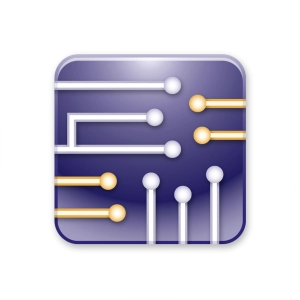
-
Multisim – Detailed Explanation
Multisim is a simulation and circuit design software used by engineers, students, and educators for designing, prototyping, and testing electronic circuits. It’s part of the National Instruments (NI) suite and is widely regarded for its powerful SPICE simulation capabilities.
1- On which platform are the tools used?
✅ Desktop Platforms:
- Windows (Primary Platform): Compatible with Windows 10 and later.
- macOS: Not natively supported, but can be run using virtualization software like Parallels or VMware.
- Linux: Not supported.
🚫 Not Available for:
- Mobile devices (Android, iOS)
- Web-based usage
💡 Multisim is designed specifically for Windows operating systems.
2- What hardware requirements are needed?
🔹 Minimum System Requirements:
- Processor: Intel Core i3 or equivalent
- RAM: 4GB (8GB or more recommended)
- Storage: At least 2GB of free disk space
- Graphics: DirectX 9.0 compatible graphics card with 512MB memory or higher
- Screen Resolution: 1366×768 or higher
- Operating System: Windows 10/11 (32-bit or 64-bit)
💡 Higher RAM and a faster processor are recommended for complex simulations.
3- Installation and membership stages
🔹 Installation Steps:
- Download the installer:
- From the official NI website: NI Multisim
- Run the installer:
- Follow the instructions and select appropriate packages (Multisim and Ultiboard).
- License Activation:
- During installation, you can activate a trial version or input your license key if purchased.
🔹 Membership & Account Setup:
✅ NI Account Creation:
- To access download links and support, an NI account is required.
✅ License Types:
- Trial Version (30 days)
- Paid Licenses (Student, Education, Professional)
💡 A trial version is available, but with limited features compared to the paid version.
4- What can it be used for?
Multisim is a powerful tool for electronic circuit design, analysis, and testing.
🔹 Primary Uses:
✅ Circuit Simulation:
- Analog, digital, and mixed-mode simulations with SPICE.
- Testing circuits in real-time with interactive components.
✅ PCB Design:
- Integration with Ultiboard for PCB layout design.
✅ Educational Use:
- Teaching electrical engineering concepts.
- Experimenting with circuits in a virtual environment.
✅ Prototyping & Testing:
- Validating designs before building physical prototypes.
✅ Measurement & Analysis:
- Oscilloscope, multimeter, and other measurement tools for in-depth analysis.
💡 Multisim is particularly valued for its accurate SPICE simulation and compatibility with educational modules.
5- What is its prominent feature compared to other tools?
✅ Unique Features of Multisim:
- SPICE Simulation: High-accuracy circuit simulation using SPICE models.
- Integration with LabVIEW: Seamless integration for creating hardware-in-the-loop applications.
- Virtual Instruments: Built-in tools like oscilloscope, logic analyzer, etc.
- Component Library: Extensive library with over 20,000 components, including real manufacturer parts.
- Educational Tools: Comprehensive resources for teaching circuit theory and electronics.
- Ease of Use: Drag-and-drop interface with simple schematic capture.
💡 Multisim is known for its user-friendly interface and integration with LabVIEW, making it ideal for both professional and educational use.
6- Sample application made with pictures
Example 1: Circuit Simulation Interface
Simple Analog Circuit Design
Example 2: Virtual Oscilloscope Measurement
Measuring Signal Responses in Real-Time
💡 Multisim provides accurate real-time simulation with interactive components.
7- Which courses can it be used in and is compatible with?
Multisim is widely used in electronics, electrical engineering, and embedded systems courses.
🔹 Relevant Courses:
- Electrical Engineering: Circuit design and analysis.
- Electronics: Analog and digital electronics training.
- Embedded Systems: Microcontroller-based projects.
- Physics & Electronics Labs: Teaching and experimenting with fundamental circuit principles.
- Technical Drawing & PCB Design: Schematic capture and PCB layout.
- Occupational Health & Safety: Testing circuits for safety and performance.
💡 Multisim is particularly popular for teaching due to its easy-to-use interface and educational resources.
8- Is it free?
🚫 No, Multisim is not completely free, but offers a trial version.
🔹 Free vs Paid Versions:
Feature
Trial Version (30 Days)
Paid Version
Circuit Simulation
✅ Limited
✅ Full (All Components)
PCB Layout Design
❌ No
✅ Yes (With Ultiboard)
Component Library
✅ Limited
✅ Complete (20,000+ components)
Educational Tools
✅ Partial
✅ Complete (For Education License)
License Type
Free (Trial)
Student, Education, Professional
Price Range
Free (Trial)
From $200 (Standard) to $1,500 (Professional)
💡 Students can get discounted licenses.
9- Links related to Multisim
🔗 Official Website: NI Multisim
🔗 Download Page: Multisim Downloads
🔗 Documentation & Tutorials: NI Learning Center
🔗 Support & Forums: NI Community🔹 Conclusion
Multisim is a professional-grade circuit simulation tool that combines powerful features like SPICE simulation, educational resources, and integration with LabVIEW. It’s highly suitable for vocational education in Electronics, Electrical Engineering, and Embedded Systems.
🚀 Why use Multisim?
✔ Accurate SPICE Simulations – High-quality modeling for accurate results.
✔ User-Friendly Interface – Drag-and-drop schematic capture.
✔ Comprehensive Component Library – Thousands of real-world components.
✔ Ideal for Education & Research – Widely used in universities and laboratories.